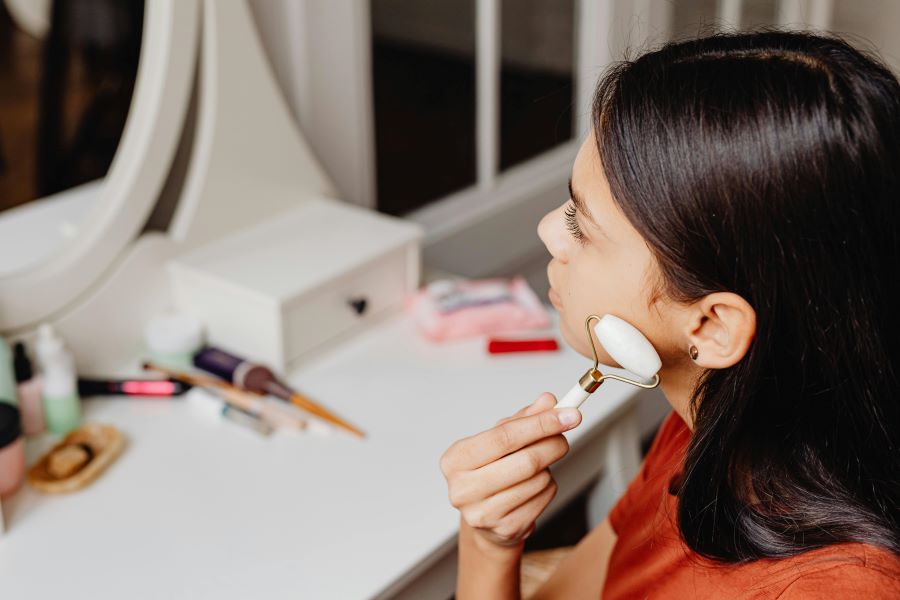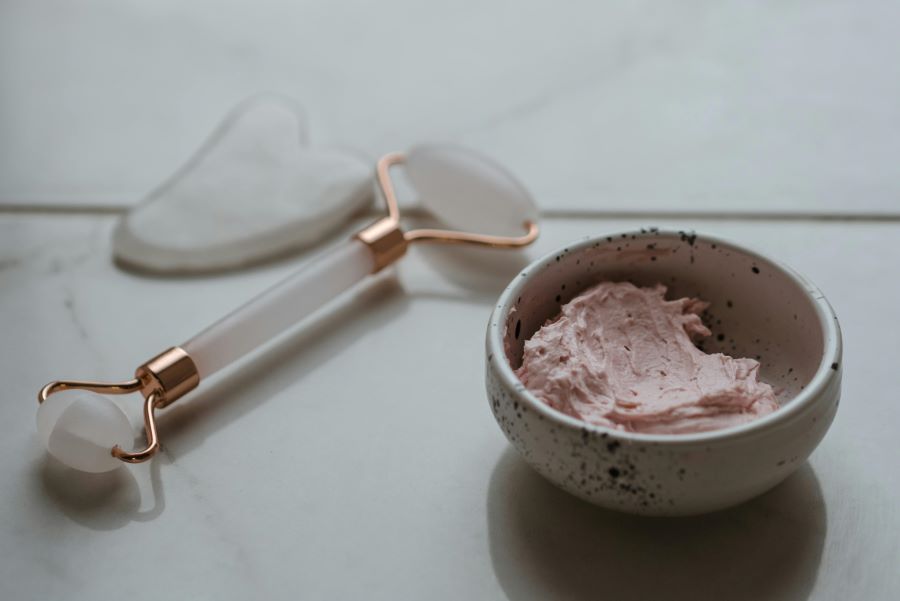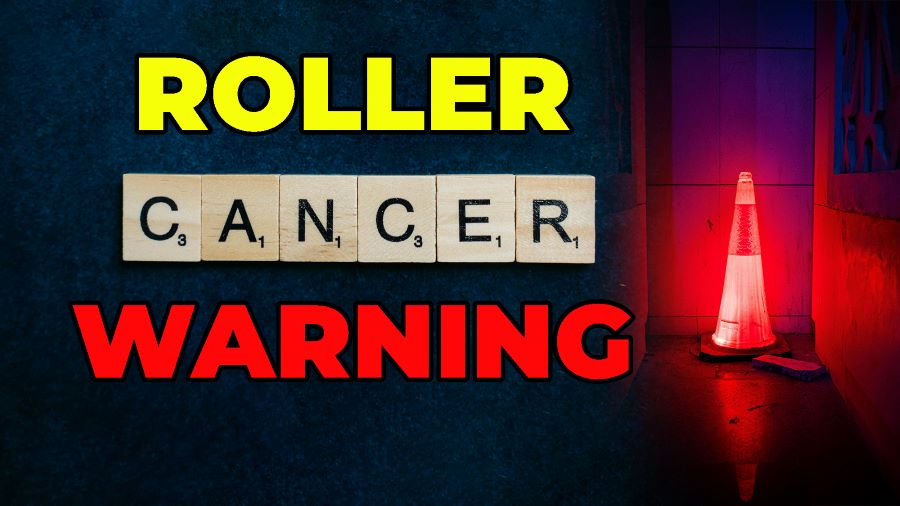I remember the first time I saw a jade roller. It sat next to a glass of cucumber water at my favorite spa. It looked so pretty, cool to the touch, and totally Instagram-worthy. Back then, I didn’t think much of it. It felt like just another part of the whole self-care trend. But recently, I came across something that made me stop: the phrase “jade roller cancer warning.”
Can something that gentle really be harmful?
That’s the question that led me down this rabbit hole. And if you’re here, maybe you’ve been wondering too. So let’s explore it together—from history to science, from buzz to facts.
What Is a Jade Roller, Really?
The word “jade” comes from the Spanish piedra de ijada, which means “stone of the flank.” People once believed it could help kidney problems. The word “roller” comes from Old French roler, which simply means to roll. It sounds simple and harmless, right?

But when you put those words together with “cancer warning,” it changes everything. Suddenly, your peaceful skincare ritual feels a little scary.
A jade roller is a small tool made with a smooth stone. It’s attached to a handle and rolled across the face. People say it helps with blood flow and drainage. In ancient Chinese medicine, it was believed to improve energy flow.
Today, it’s sold as a luxury item. But with all the talk around the jade roller cancer warning, we have to ask: is it really safe?
Jade Rollers in Skincare
Why do people love jade rollers so much? They promise smoother skin, less puffiness, and a natural glow.
The idea of “rolling away toxins” fits perfectly into the beauty world’s obsession with detoxing. Sure, many doctors roll their eyes at it, but influencers rave about the results. Words like “natural remedy” and “facial massage” make it feel like something every wellness lover should have.
But if something touches your face daily—especially around sensitive spots like lymph nodes—it should be looked at closely. That’s where the jade roller cancer warning comes in. Behind all the glowing reviews, there might be hidden dangers.
Different Kinds of Rollers (Hyponyms)
Jade rollers aren’t the only tool out there. Some of their close cousins include:
- Gua Sha tools
- Amethyst rollers
- Rose quartz rollers
- Cold stainless-steel rollers
They might look different, but they all serve the same purpose. Are they safer? Not always. That’s why it’s important to know what’s in your skincare tools.
What Else Comes with the Roller?
When you pick up a jade roller, chances are it’s not sitting there by itself. Most of the time, these rollers come bundled up in beautifully curated skincare sets. Think delicate glass bottles filled with rosehip oil, velvety creams promising eternal glow, and maybe even a velvet-lined box that screams luxury. Everything about the presentation is designed to feel indulgent, trustworthy, and safe. It feels less like a tool and more like a self-care ritual.

And let’s be honest—when something comes packaged with so much elegance and intention, it’s easy to let your guard down. You think, “This is part of a high-end spa kit. How could it possibly be harmful?” That’s where the danger lies—not in the roller itself necessarily, but in the perception it creates.
The jade roller cancer warning isn’t just about a single object; it’s a caution about the whole experience. It’s about how marketing can mask potential concerns with aesthetics and serenity. That soft green stone, that cool-to-the-touch surface—it doesn’t raise red flags at first glance. But underneath all that pampering lies a responsibility to ask deeper questions: Where was it sourced? Was the jade treated with chemicals? Could it be contaminated with trace heavy metals or radiation, especially when sourced from unregulated markets?
The truth is, pretty packaging and calming colors can distract us from doing our homework. They create a false sense of security, leading many to skip the critical thinking that usually comes with health and wellness decisions. So while the roller may come nestled next to creams and oils that promise radiant skin, the jade roller cancer warning urges us to look past the aesthetics and into the science, sourcing, and safety behind the product.
What’s Inside a Jade Roller?
A jade roller usually has:
- A handle (metal or plastic)
- A jade stone head
- A metal frame
- A small rotating piece
The stone is the star. But if it’s untreated or comes from radioactive areas, that’s where problems might begin. And you won’t know just by looking at it.
Is the Cancer Warning Real?
It’s a question more people are starting to ask: Is the jade roller cancer warning something to worry about—or just another internet rumor? On the surface, jade rollers seem harmless. They’re cool, smooth, and often used in gentle, relaxing motions across the skin. But beneath that glossy exterior, there’s a little-known concern that’s starting to gain attention.
Here’s the truth: some types of jade—especially nephrite and jadeite mined from certain regions—can contain trace amounts of naturally occurring radioactive materials. These include elements like uranium, thorium, and potassium-40. They’re not added on purpose; they exist naturally in some geological formations. When the jade is carved, polished, and turned into rollers without proper testing or regulation, there’s a possibility—however small—that radioactive particles could remain.
Does that mean using a jade roller will give you cancer? That’s where things get murky. Right now, there’s no conclusive evidence proving that jade rollers cause cancer. At the same time, there’s no widespread research confirming they’re entirely free of risk either. Most dermatologists aren’t raising red flags, but they’re also not giving jade rollers a clean bill of health—especially those of unknown origin or questionable manufacturing standards.
The biggest issue? There’s currently no standardized testing or regulation for jade rollers in most countries. Unlike skincare products, which must pass certain safety thresholds, these tools often fly under the radar. That jade roller you bought from a discount site or a trendy social media ad may have never been tested for safety. It could be genuine jade, or it could be a composite stone laced with fillers and minerals that raise radiation concerns.
And the packaging? It won’t tell you much. Most brands don’t disclose sourcing or composition details. You won’t find a jade roller cancer warning label tucked inside the box. In fact, many sellers don’t even know where their jade originates from. That’s why experts recommend being cautious—especially with ultra-cheap versions that seem too good to be true.
So should you be worried? Not necessarily, but you should be informed. If you’re going to use a jade roller regularly—pressing it against your skin, storing it near your face—it makes sense to invest in one from a reputable source that offers transparency about their materials. Because while the risk may be low, when it comes to long-term exposure and potential radiation, it’s better to ask questions now than wonder later.
The jade roller cancer warning might not be making headlines yet, but that doesn’t mean it should be ignored. In a world where beauty trends move faster than research, it’s wise to pause, investigate, and prioritize your health above all else.
Who’s Talking About It?
Here’s what different people and groups are saying:
- The FDA hasn’t made an official statement yet.
- Dermatologists say to be cautious, especially with untested products.
- Beauty influencers are split—some say it’s fine, others are alarmed.
- Wellness blogs usually suggest being informed without panicking.
Some experts say the radiation risk is super low. Others say we shouldn’t ignore it, especially with tools that touch sensitive areas.
Are There Safer Options?
If jade rollers make you nervous, try these:
- Stainless steel rollers
- Cold spoons from your fridge
- Your hands (clean and gentle massage)
Some other options like derma rollers work too, but they come with their own risks. The key is knowing what you’re using and where it comes from.
Words Matter
The phrase “jade roller cancer warning” is powerful. It grabs attention and creates fear. That’s why words like “natural” and “gentle” don’t match up well with “radiation” or “cancer.”
This isn’t just a science issue—it’s also about how products are marketed. We need clearer labels and better sourcing.
Using a Jade Roller Safely
Want to keep using yours? Here’s how to do it safely:

Choose the Right Brand: Go with companies that are open about where their jade comes from. Look for proof of testing.
Inspect Before You Use: Check for cracks or odd colors. If the metal feels weak or loose, skip it.
Clean It Regularly: Wipe it with alcohol or soap after each use. Store it in a clean, dry place.
Try Other Options: A cold spoon or your fingertips can be just as effective. And safer.
Understanding the Jade Roller Cancer Warning
Lately, a quiet ripple of concern has been sweeping through beauty circles: the jade roller cancer warning. At first glance, it might sound exaggerated or fear-driven—especially given how beloved jade rollers have become for their cooling touch, ability to de-puff eyes, and luxurious, spa-like vibe. These tools are often seen as symbols of gentle self-care. But beneath their polished green surface lies a growing conversation about what they’re really made of. The concern isn’t with the rolling itself, but with the jade. Some varieties—particularly those sourced from areas rich in naturally occurring radioactive minerals—can contain trace amounts of uranium or thorium. While these elements don’t usually pose immediate threats, experts are beginning to ask whether regular, long-term exposure could quietly carry risks. The problem is compounded by the fact that jade rollers are largely unregulated. Unlike skincare creams and serums, they aren’t subjected to strict safety testing or required to disclose sourcing. That means many budget rollers sold online may offer no transparency—no labels, no lab reports, no real clue about what you’re pressing against your skin. Most dermatologists say the actual danger is likely minimal, especially with rollers from trustworthy brands. But that’s not the point—the jade roller cancer warning is less about panic and more about prompting smarter choices. It’s a reminder to ask where your tools come from, to be wary of vague packaging and suspiciously cheap prices, and to treat your skin with the same care you’d give to any other part of your health. After all, in a world where wellness trends spread fast, awareness should always keep pace.
FAQs
Can jade rollers cause cancer? There’s no proof they do. But untreated jade may contain natural radiation, which is where the concern comes from.
How can I check if my jade roller is safe? Ask the company for test results or certifications. If they won’t answer, that’s a red flag.
Are there better alternatives? Yes. Stainless steel tools, or just using your hands, can be safer.
Do all stones have radiation? Not all, but some do. It depends on where they’re from.
What do dermatologists suggest instead? Simple routines: cleanse, hydrate, and massage with clean hands or proven tools.
Conclusion: What the Jade Roller Cancer Warning Really Means
So—should you throw your jade roller away? Not necessarily. But it’s smart to think more carefully about how you use it.
I still have mine. But I know where it came from. I don’t use it daily. And I clean it like any skincare tool.
This isn’t about fear. It’s about being aware. The jade roller cancer warning isn’t a reason to panic. It’s a reason to pause and ask questions.
Your skin deserves more than good marketing. It deserves real care. It deserves the truth.

